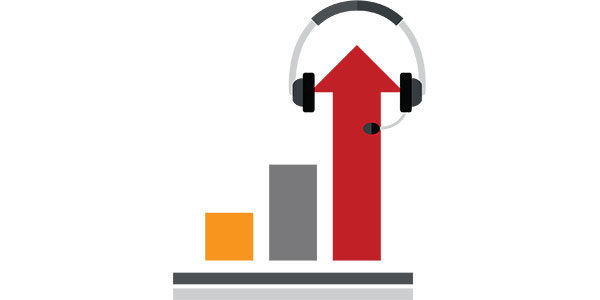Furnishing higher productivity

Adapting to change is nothing new for South Shore Furniture. The family-owned Canadian company has refurbished its business model several times since it was founded over 75 years ago. Originally, it manufactured wooden toys. It later switched to wooden kitchen furniture until chrome became the rage in the 1950s, at which point it shifted to bedroom furniture. In the 1990s, it began selling office furniture through leading business supply stores. Then came the Internet revolution, and South Shore adapted once more, realizing that its future lay in selling a variety of furniture items online, directly to the consumer.
Today, e-commerce orders make up 95 percent of South Shore's sales. Most orders come through the websites run by Amazon, Walmart, Wayfair, and other top online retailers. Orders are shipped to consumers from two distribution facilities in Quebec and a third in El Paso, Texas.
Of course, the most recent shift in business models had some implications for the company's back-office operations. For instance, it soon became clear that the switch to direct-to-consumer order fulfillment would require some changes to order picking procedures. "Before, we had picked pallets for stores. When we moved to online (sales), it changed our strategy," says Claude Bernier, vice president at South Shore.
In particular, it would mean a change in the way order picking directions were communicated to associates. In the past, picking was carried out via paper lists. But with the shift to the e-commerce model, order profiles changed markedly, making that impractical. Most orders now consist of a single item, Bernier explains, which means there are too many orders and too much variety to effectively process with paper.
A SOUND CHOICETo make picking easier and more productive, South Shore turned to the Lydia voice system from Top-Vox to direct order selection. Among other advantages, the voice system, which conveys directions via headsets, leaves workers' hands free for picking tasks. As Bernier puts it, "We have big boxes, and the workers need their hands."
Under the new system, workers pick in teams, with one associate wearing the voice headset and pushing a cart with labels and other supplies, while the other team member drives a forklift with an order pallet to hold the selected items. (The company's furniture is packaged unassembled and flat-packed, which makes it easier—and more economical—to ship.) The team approach makes work faster and easier, and avoids injuries.
Orders are grouped into batches for picking based on shipping mode. The voice system provides workers with directions on where to go for the pick and how many of each item to select for the batch. To confirm that they've selected the right product, associates read the location's check digit back into the system. They then place shipping labels on the cartons and deposit them onto the pallet.
The ease of using voice to direct work also helps new and temporary employees adapt quickly. "It is very, very simple, and it is easy to train them on," says Bernier. "You don't have to be computer-literate. You just have to listen. It is one step at a time."
Veteran staffers have embraced the change as well, according to Marc Tremblay, the company's logistics director. "They feel like they went from the Stone Age to modern technology," he says.
In addition to using the voice system to direct picking operations, South Shore uses it for receiving, putaway, stock transfers (replenishment), and inventory management.
BIG BOOST IN PRODUCTIVITYBernier reports that his company's transition to voice was quite easy, as the system integrated directly into South Shore's SAP warehouse management system. "That was transparent. We did not want any middleware," he says. "We just wanted to avoid those problems and have something that was embedded directly into SAP."
Since the voice system was implemented, South Shore has seen a nearly 20-percent jump in productivity. That led to a solid return on investment (ROI) for the technology. "We looked for an ROI of one year, but it was well below that," says Bernier.
Related Articles

Copyright ©2024. All Rights ReservedDesign, CMS, Hosting & Web Development :: ePublishing